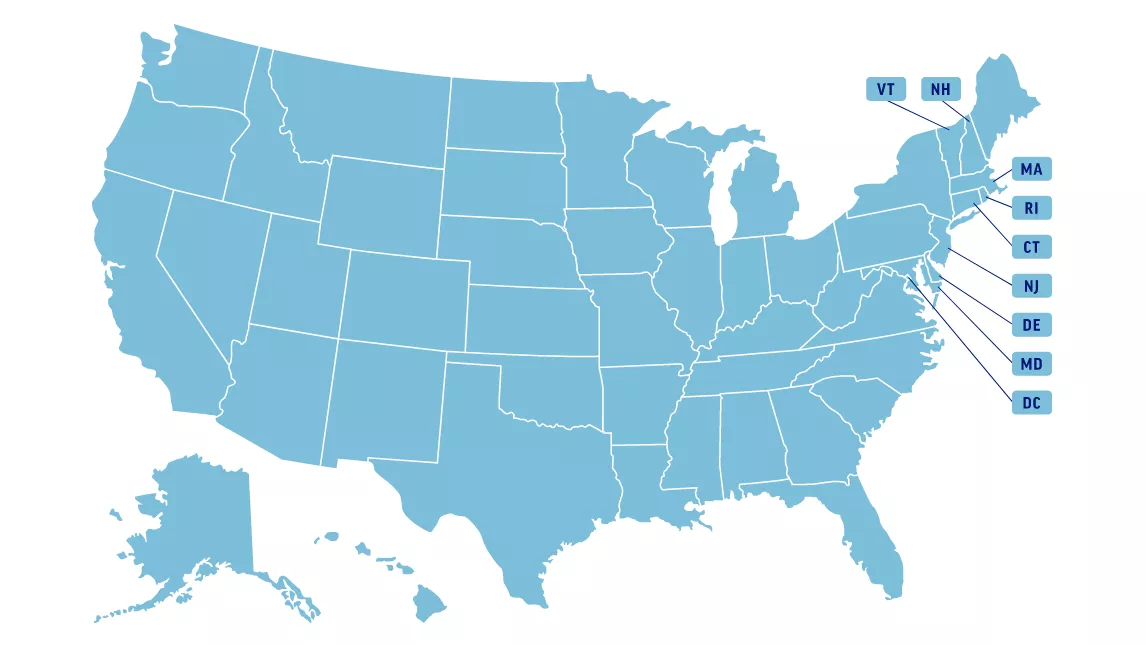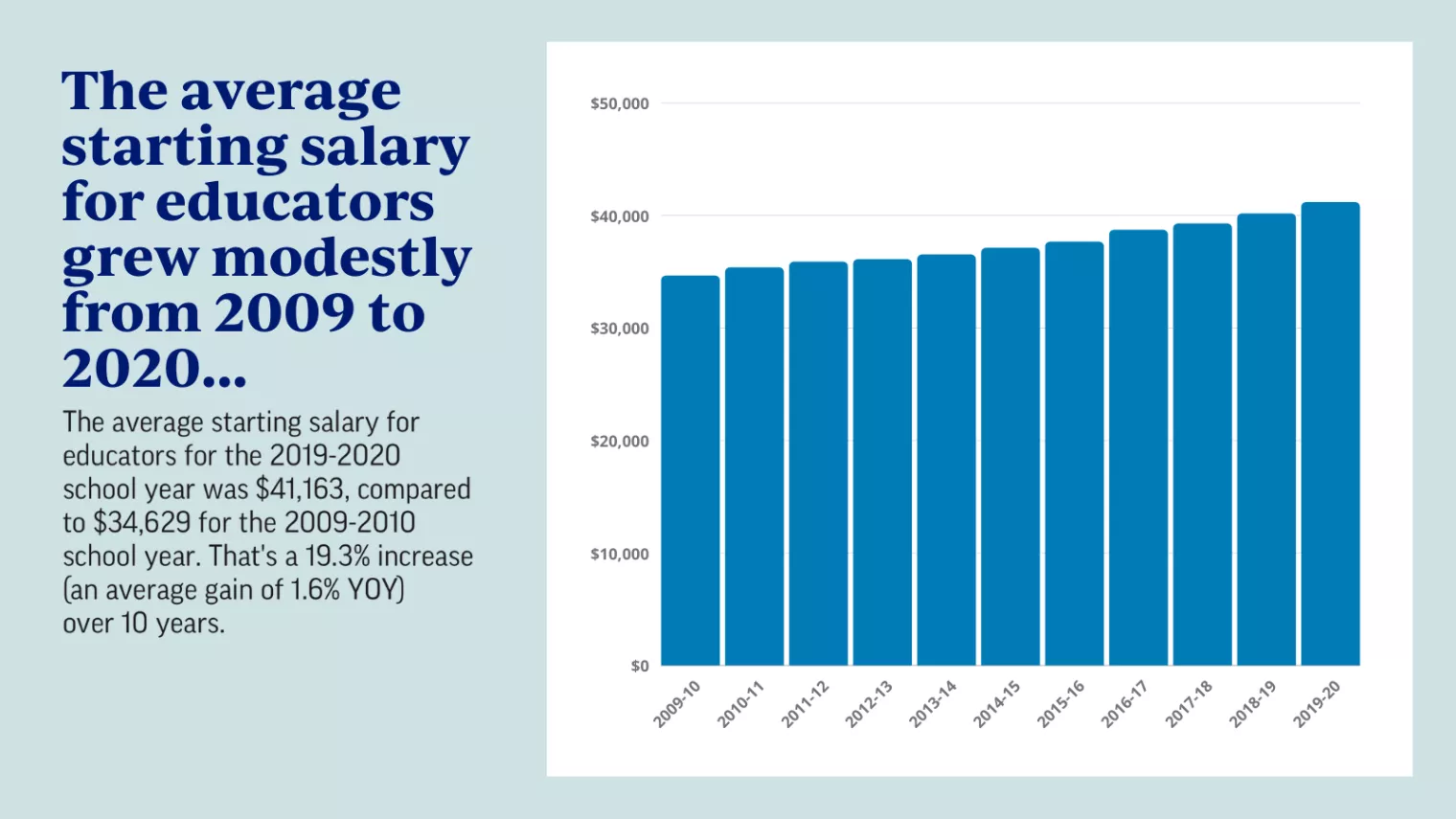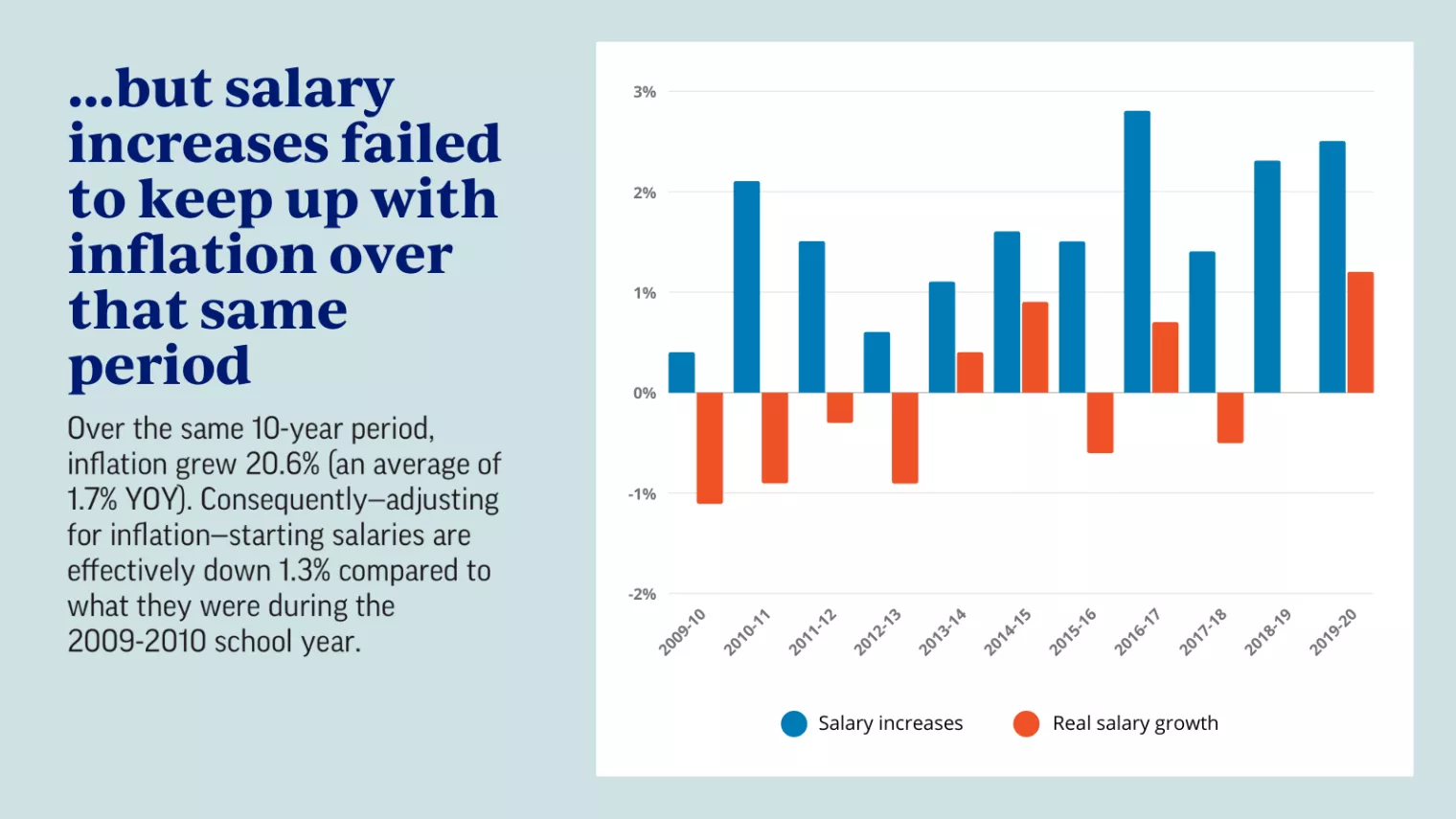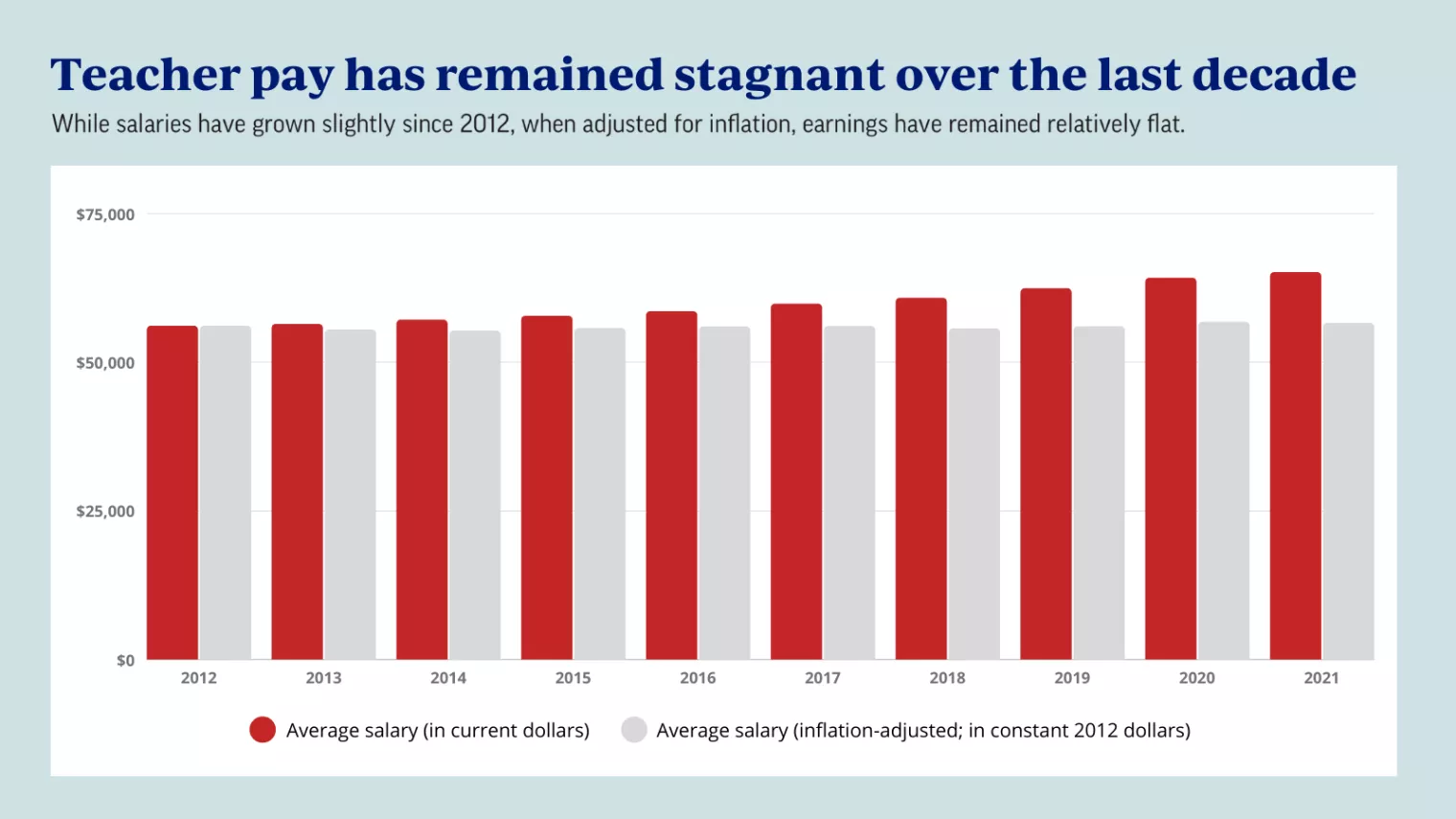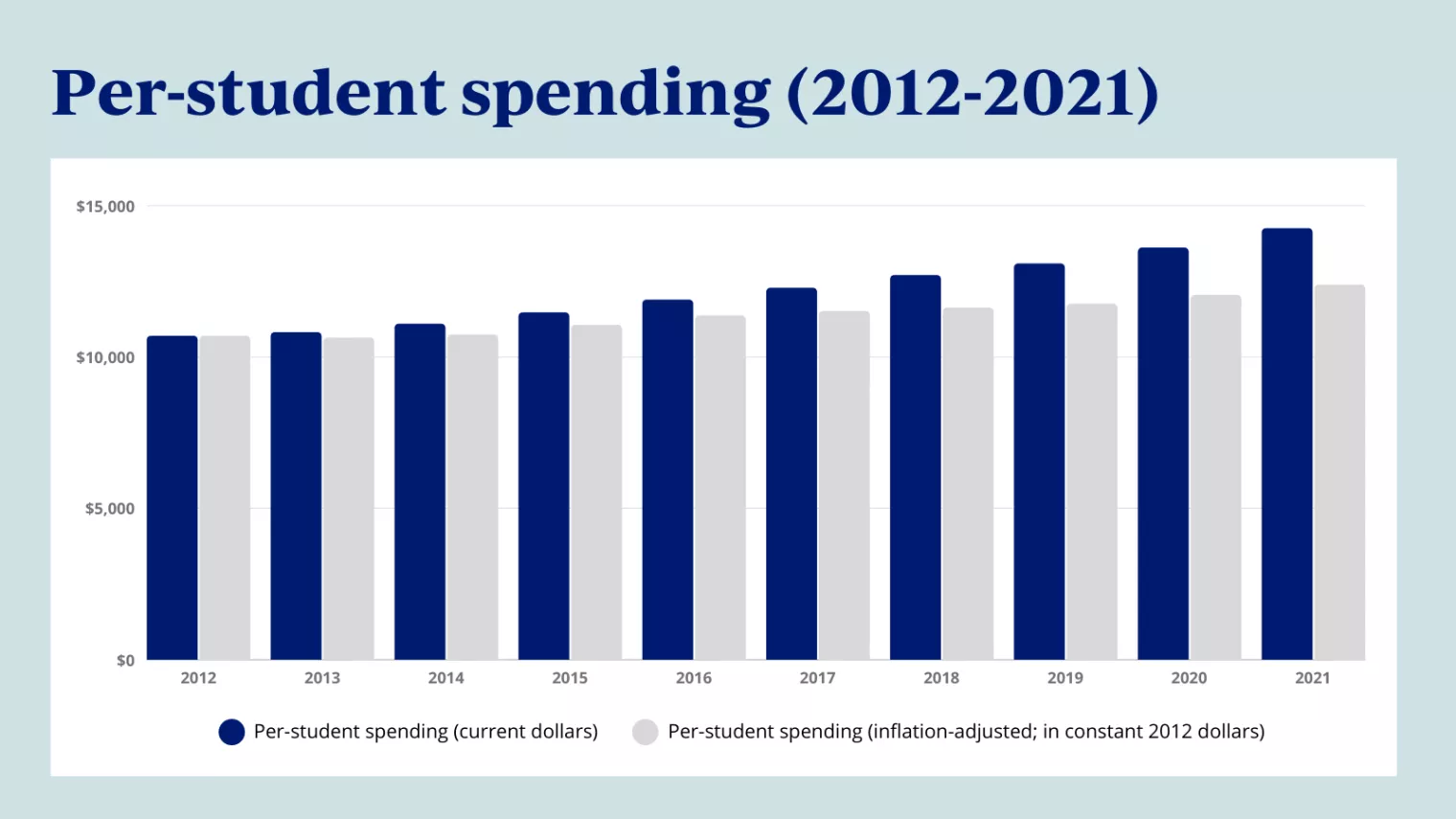WASHINGTON — NEA’s annual reports, which comb through data covering everything from the average teacher salary to state spending on students, show the country was finally headed toward increased support for students when the COVID-19 pandemic struck. Now, much of the recovery from the Great Recession could reverse course, while recent progress around chronic funding gaps and the educator pay penalty could be lost.
“No matter where we are from or what we look like, everyone deserves access to a quality public education that prepares students for a complex and interdependent world. Because of the #RedForEd movement and public awareness and pressure to improve the teaching profession, teachers were able to make up ground and make some gains in their salaries, especially in under-resourced communities,” said NEA President Becky Pringle. “We can’t lose sight of the work that needs to be done, particularly in attracting and retaining quality educators at schools that serve predominately Black, Brown and indigenous students. We have to build back better than where we were before the COVID-19 pandemic and economic crisis.”
NEA’s Rankings and Estimates report, which provides thousands of education statistics and has been produced by the National Education Association for more than 70 years, estimates the national classroom teacher salary was $65,090 for the 2020-21 school year. This national average salary only slightly increased by 0.9 percent over the past decade, when adjusted for inflation. Many researchers credit the #RedForEd movement—when NEA members across the nation, starting in 2018, advocated for the resources and learning conditions that help all students succeed—as the catalyst for gains in teacher salaries. Other notable national trends over the past decade reveal that public school enrollment is down by 0.5 percent, average daily student attendance has decreased by an estimated 1.1 percent, and the number of K-12 classroom teachers has increased by 4.6 percent.
National Findings
NEA also collects data on teacher starting salaries and released those findings alongside its Rankings and Estimates report. The average starting teacher salary for 2019-2020, across nearly 12,000 public school districts, was $41,163, an increase of 2.5 percent over 2018-2019. When adjusted for inflation, this marks the largest annual increase in starting pay since before the Great Recession. It was just the fourth time in 11 years where the growth in the average starting teacher salary kept up with inflation and was the only year when salary increases outpaced inflation by a percentage point or more. The data provided in this latest report occurred before the COVID-19 pandemic turned education on its head, and researchers are quick to caveat the optimistic trends with unknown repercussions that have yet to be revealed.
Teachers are paid almost 20 percent less than similarly educated and experienced professionals, according to a recent Economic Policy Institute report, which found that the “teacher pay gap” reached a record high in 2018. This difference between teacher pay and other college-educated professionals’ pay is partly due to the persistent gender gap in wages—across all full-time jobs in the United States, women earn about 80 percent of men’s salaries. Historically, teaching has been a profession made up mostly of women. Today, 76.6 percent of educators are women.
The NEA report also reveals other troubling data in student enrollment and attendance. In fall 2019, U.S. public schools enrolled 50,189,401 students, a decrease of 0.1 percent from fall 2018. During the same period, the number of students in average daily attendance decreased by 0.5 percent nationwide. In fall 2020, public school enrollment decreased by an estimated 2.4 percent from the previous school year. The number of students in average daily attendance is projected to decline by 2.0 percent from 2019-20 to 2020-21. On a positive note, the national average per-student expenditure in 2019-20, based on fall enrollment, was $13,597, a gain of 4.0 percent from $13,078 in 2018-19. Researchers, however, caution against relying solely on national figures and point to the states for a more complete picture, especially when looking at communities of color, rural communities and states with historically lower union density.
The following states had the highest per-student expenditures in 2019-20: New York ($25, 907), the District of Columbia ($23,231), and New Jersey ($22,097). Idaho ($7,705), Utah ($8,306), and Mississippi ($9,181) had the lowest. Expenditures per student in fall enrollment are projected to increase by 4.8 percent to $14,243 in 2020-21, up from $13,597 in 2019-20.
“As the nation’s public schools struggle with a looming teacher shortage that has only been exacerbated by the COVID-19 pandemic, one of the best indicators of attracting and retaining teachers is looking at the starting and average salaries for the profession,” said Pringle. “That’s why NEA has advocated for a base starting teacher salary of at least $40,000, a threshold that still remains out of reach in many parts of the country that, not surprisingly, struggle to attract and retain quality teaching professionals in every classroom.”
For example, in 2019-2020, 846 school districts hit this minimum salary threshold. However, more than 6,100 school districts that employ 800,000 teachers still do not offer a starting salary of at least $40,000. But it’s not just first-year teacher salaries that cause concern: in some states, teachers will never earn professional pay. The average top salary for teachers is $75,913. Though a maximum salary of at least $100,000 is available in nearly 1,200 school districts, nearly 2,100 districts still offer a top salary that is less than $60,000, even for teachers with doctorates.
“What we don’t know is what will happen in the 2020-21 school year and beyond because the COVID-19 pandemic has completely changed public education,” added Pringle. “We are still in a funding hole that was dug decades ago, and as unprecedented inflation looms from our current economic crisis, the country cannot afford to take its foot off the pedal of progress.”
Highlights from this year’s report, including national and state-by-state averages:
Enrollment and Attendance
- In fall 2019, U.S. public schools enrolled 50,189,401 students, a decrease of 0.1 percent from fall 2018. During the same period, the number of students in average daily attendance (ADA) decreased by 0.5 percent nationwide.
- Public school enrollment is expected to decrease by an estimated 2.4 percent from 2019-20 (50,189,401) to 2020-21 (48,985,186) and the number of students in average daily attendance is projected to decline by 2.0 percent.
Classroom Teachers
- U.S. public schools employed 3,214,673 teachers in 2019-20. The number of classroom teachers is not expected to change significantly from 2019-20 to 2020-21.
Teacher Salary
- The national average public school teacher salary for 2019-20 was $64,133. State average teacher salaries ranged from those in New York ($87,069), California ($84,531), and Massachusetts ($84,290) at the high end to Mississippi ($46,843), South Dakota ($48, 984) and Florida ($49,102) at the low end.
- The national average one-year change in public school teacher salaries from 2018-19 to 2019-20 was 2.9 percent.
- The average classroom teacher salary for 2020-21 is projected to increase by 1.5 percent over 2019-20, from $64,133 to $65,090.
Expenditures Per Student
- The national average per-student expenditure in 2019-20 based on fall enrollment was $13,597, a gain of 4.0 percent from $13,078 in 2018-19. The following states had the highest per-student expenditures: New York ($25, 907), the District of Columbia ($23,231), and New Jersey ($22,097). Idaho ($7,705), Utah ($8,306), and Mississippi ($9,181) had the lowest per-student expenditures.
- Expenditures per student in fall enrollment are projected to increase by 4.8 percent to $14,243 in 2020-21, up from $13,597 in 2019-20.
To download the report, state-by-state data and graphs, visit nea.org/educatorpay
Suggested Further Reading
Media Contact
- Cristen Haddad
- [email protected]
